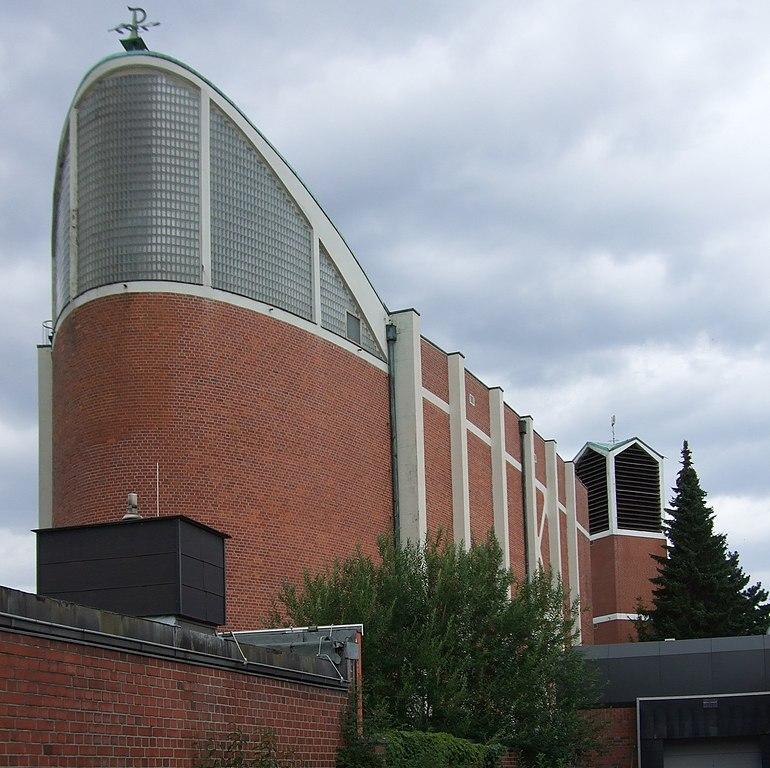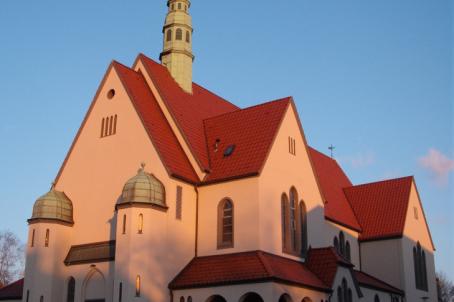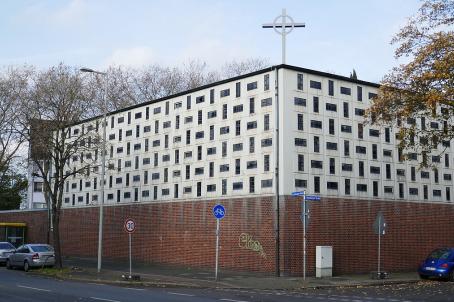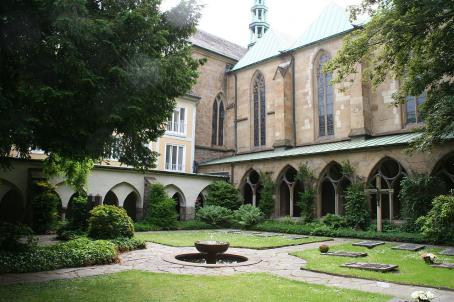Heilig Kreuz Kirche, Bottrop

The Heilig Kreuz Church in Bottrop, Germany, built from 1955 to 1957, showcases a parabolic floor plan and combines historical influences with modern materials. Symbolic elements include spiral windows, a glass eye, and a hovering dove. Deconsecrated in 2007, now preserved by the Cultural Church Heilig Kreuz Association.
About this building
The Heilig Kreuz Church in Bottrop, Germany, constructed from 1955 to 1957, serves as a prototype for parabolic floor plans, reflecting the architectural philosophy of Rudolf Schwarz. Its design combines historical influences with modern materials to create a timeless and expressive structure.
The church's floor plan, shaped like a parabola, extends from the altar, opening towards the congregation, the church square, and the world—an embodiment of liturgical architectural principles. The north wall features a 300-square-meter glass facade, framed by white concrete triangular supports, creating a striking contrast between light and darkness. Monumental spiral windows symbolize eternity, complementing the parabolic form.
The church's layout extends to the surroundings, with continued walls and a freestanding bell tower. Inside, bronze portals by artist Theo Heiermann provide access, while the red brick walls match the exterior. The roof opens at the apex, allowing light to fill the space through a glass block wall.
Symbolic elements include a large glass eye representing the Holy Trinity, a hovering dove above the altar, and a cross on the front wall. Deconsecrated in 2007, the church is now preserved and utilized by the Cultural Church Heilig Kreuz Association, established in 2013.
For more information on this building visit https://strasse-der-moderne.de/kirchen/bottrop-heilig-kreuz/





